Apple iPad mini 6th Gen (Wi-Fi/Cell US/Global) 64, 256 GB Specs
For Wholesale Prices of Minimum 10pcs Please Email
£800.00
Perks & Benefits
12 month refurbished warranty:
If your item has a technical defect within the first year, we’ll repair or replace it.
30 days to change your mind:
Return your item for any reason within the first 30 days of receiving it. Simple as that!
Free standard shipping:
Fast free delivery!
Customer support:
You can count on us to always get back to you within 1 business day!
Pay in installments:
Make easy monthly payments over 3, 6, or 12 months.
Have any Questions?
Feel free to Get in touch
Note that this Wi-Fi/Cellular model does support GPS/GNSS and 5G NR cellular networking, but it does not support 5G NR mmWave, bands n258 (26 GHz), n260 (39 GHz), and n261 (28 GHz). This single model was sold nearly worldwide — including in the United States — but it was not sold in mainland China.
The iPad mini 6th Gen (Wi-Fi + Cellular) features a fully-laminated, antireflective 8.3″ LED-backlit 2266×1488 “Liquid Retina” display (326 ppi, 500 nits) surrounded by a thin black bezel and is packed in a thin case with rounded corners and flat sides. The back has four metallic color options — a charcoal “Space Gray”, pink, purple, and a warm gray “Starlight.”
This iPad mini is powered by a six-core Apple A15 Bionic processor, a five-core GPU, and a 16-core “Neural Engine”, has 4 GB of RAM, and is equipped with either 64 GB or 256 GB of flash storage. Other noteworthy features include a “Touch ID” authentication sensor built into the top button as well as support for the Apple Pencil 2nd Gen (A2051, MU8F2AM/A) that conveniently charges via a magnetic connection on the side of the device. It has a front-mounted 12 megapixel “Ultra Wide” FaceTime HD camera with a 122-degree field of view that shoots up to 1080p video, supports cinematic video stabilization, and “Center Stage” to automatically track and zoom to keep subjects in frame. It also has a rear-mounted 12 megapixel camera that shoots up to 4K video with cinematic video stabilization.
In addition to a USB-C port, other connectivity includes 802.11ax (Wi-Fi 6) with HT80 with MIMO capability and Bluetooth 5.0 as well as 4G/LTE and the aforementioned 5G capability. It has a single nano-SIM slot and supports eSIM, too. It has dual microphones and stereo speakers. Battery life is reportedly 10 hours of “surfing the web on Wi-Fi or watching video” and 9 hours “surfing the web using [a] cellular data network.”
Compared to its predecessor, the iPad mini 6th Gen (Wi-Fi + Cellular) models are a dramatic improvement and have more in common with the higher-end iPad Air than their iPad mini forefathers. With the removal of the Home button and the smaller bezels, they are physically smaller, but have a larger display. They also have a more powerful and advanced architecture, better cameras, support more advanced external keyboards, use USB-C (instead of Lightning), and support the more advanced Apple Pencil 2nd Gen and clever “Touch ID” sensor in the top button, as well.






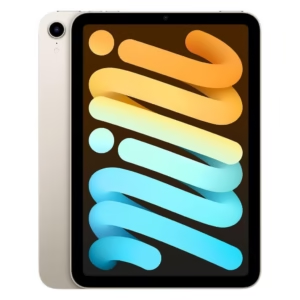




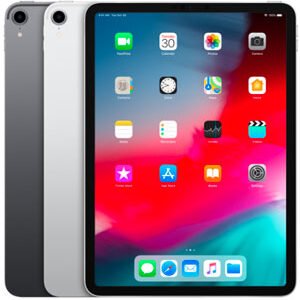
Reviews
There are no reviews yet.